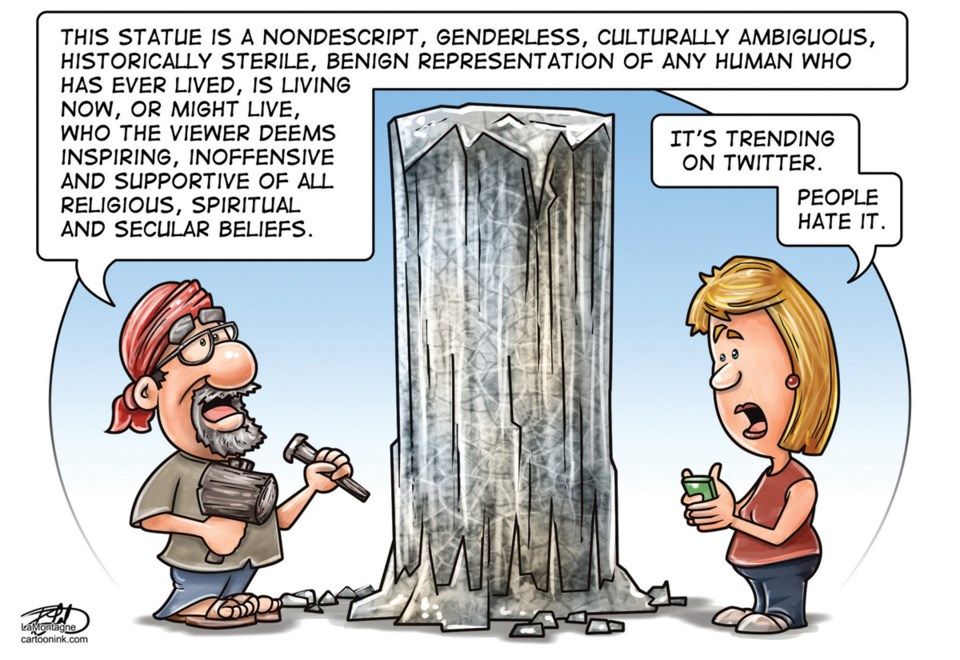Around this time last year I was watching a news video of the large counter-protest at Vancouver City Hall, and I almost flipped. The camera was panning the scene of demonstrators milling around the statue of Capt. George Vancouver and “anti-hate” placards were visible around the statue’s base.
“Oh no,” I thought. “They’re going after George.”
It took me a few moments to realize that the magnificent statue, created by Charles Marega for the city’s Golden Jubilee celebration in 1936, was simply being used as a convenient prop. The focus was not on George. I was relieved.
But I realized that at some point George will come under attack – as a symbol of imperialism and supremacy. He’ll trigger someone and he’ll have to go. Leading the charge, no doubt, will be a pious paleface looking to buy herself a stairway to social justice heaven.
And I thought about another George, closer to home – George William Gibson, whose bronze likeness by the late Jack Harman oversees the harbour in the town named after him. Even though no one has a bad word to say about Gibson as an individual, he’ll be easy pickings too – as a symbol of colonization and dispossession.
You can hear the clock ticking on the two Georges after the spectacle in Victoria last Saturday, when Canada’s first prime minister, the leader most responsible for British Columbia being a part of Canada, fell under the wrath of a pretentious mayor and her “city family” committee. Sir John A. Macdonald had to go because he was a symbol of the residential school system and oppression. The image of Macdonald’s effigy suspended from a harness, like Louis Riel from the gallows, must have brought thrills of delight to a minority of Canadians, but at the cost of deep humiliation and resentment to many others, who saw it as a hateful act toward Canada.
The supposed gesture of reconciliation was exposed as its opposite, causing division and a great deal of misdirected anger. Compare it to the syiyaya movement’s Weaving Reconciliation session which took place in Sechelt on the same morning, bringing people together in learning and understanding, rather than dual street protests.
Going back to Charles Marega, who sculpted George Vancouver as well as the lions at the Stanley Park entrance to the Lions Gate Bridge. One of his other impressive works is a statue of Maquinna at the provincial library building in Victoria. There is really nothing good to say about Maquinna, who was a famous chief of the Nuu-chah-nulth people of Nootka Sound. In 1803, he had the crew of the trading ship Boston murdered and beheaded after he felt slighted by the ship’s captain. He had slaves too, including Europeans.
By today’s standards, Maquinna was a psychopathic monster, but that’s not the point. He represents a cruel warrior spirit born of his place and time. He belongs. And he doesn’t need a plaque or a conversation.



